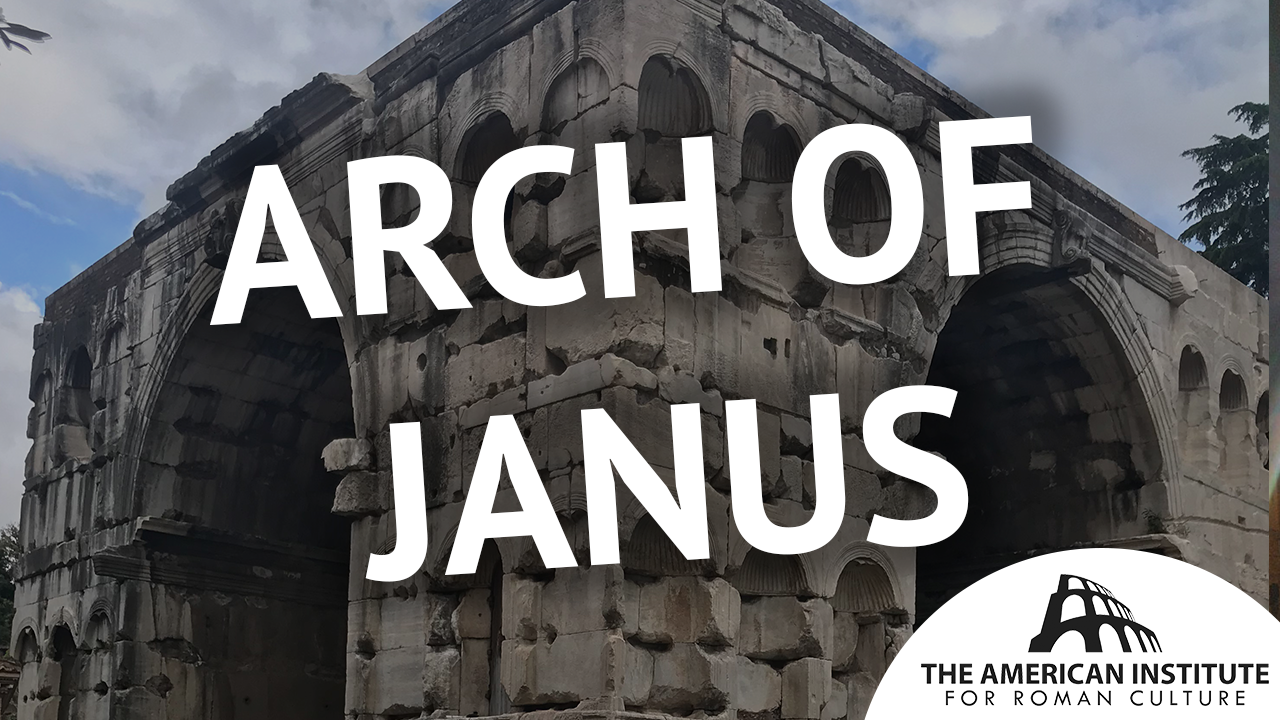Start with our video overview:
This massive (16 m high X 12 m wide) marble-faced quadrifons arch is a late antique construction which is composed on reused blocks of marble from previously constructed monuments, straddling the subterranean course of the Cloaca Maxima on its way to the Tiber River. There is no inscription to securely identify it, but the. Regionary Catalogues list an arch of Constantine in the area. An upper floor existed (recorded in drawings of the 16-18C) until it was removed in the 19C.
This is currently a monument being restored by World Monuments Fund.
Richardson 208
IANUS QUADRIFRONS, the name ordinarily given to a four-way arch of marble, which stands directly over the cloaca Maxima, and probably marked the line of separation between the forum Boarium and the Velabrum. It consists of four piers connected by quadripartite vaulting, and is 12 metres square and 16 high. The arches themselves are 10.60 metres high and 5.70 wide. Round all four sides run two rows of niches for statues, forty-eight in all, of which sixteen are unfinished. The keystones of the arches were sculptured, and the figures of Minerva and Roma are still visible on the north and east sides. The structure is of late date, third or fourth century,1 and may perhaps be identified with the arcus divi Constantini in Region XI (Not., om. Cur.; DAP 2. vi. 261; Jord. i. 2. 471). For a detailed description of this arch, see PAS ii. 80; Toeb. i. 131-135; ZA 258-261 ; for illustrations, Baumeister, Denkm. iii. pl. Ixxx. 6, lxxxi. 8; Canina, Edifizi, iv. 253. Cf. ASA 119.
Hulsen points out (Toeb. cit.) that the superstructure, which was removed in 1827 as mediaeval, probably belonged to the attic (DuP. pi. 23, fig. 38 and pp. 74, 75); and reconstructs it with a pyramid on top.
1 It is attributed to a period a little before Diocletian in Zeitschr. f. Gesch. d. Archit. viii. (1924), 74, as against the attribution to the second third of the fourth century in Toeb.
This content is brought to you by The American Institute for Roman Culture, a 501(C)3 US Non-Profit Organization.
Please support our mission to aid learning and understanding of ancient Rome through free-to-access content by donating today.
Cite This Page
Cite this page as: Darius Arya, The American Institute for Roman Culture, “Arcus Janus (Arch of Janus)” Ancient Rome Live. Last modified 02/26/2021. https://ancientromelive.org/arcus-janus-arch-of-janus/
License
Created by The American Institute of Roman Culture, published on 02/21/2021 under the following license: Creative Commons: Attribution-NonCommercial-ShareAlike. This license lets others remix, tweak, and build upon this content non-commercially, as long as they credit the author and license their new creations under the identical terms. Please note that content linked from this page may have different licensing terms.




